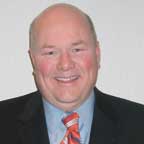Rebuilding Downtown Canton

In my position as a business relationship manager with the Illinois Department of Commerce and Economic Opportunity (DCEO), it is my job to help entrepreneurs create employment opportunities for the citizens of Illinois. This task comes in many forms, sometimes as straightforward as helping a new business locate in a new home city, thereby creating good-paying jobs for those citizens. Other times, we must get more creative and help create our own opportunities.
In numerous meetings with businesses, employers list as one of their top concerns the lack of a prepared workforce. Some are seeing an increase in workers with poor work ethics and lack of basic skills. I had also been aware for some time about concern in the building trades regarding the lack of “new blood” coming into the skilled trades to bolster their aging workforce.
One day last fall, while looking over the Canton square and seeing a large vacant lot, I thought, why not build a commercial building here on the square using students? We could get the students on the jobsite with highly-skilled union trades professionals as a way of introducing our youth to career opportunities in the trades. Non-college- bound students have very limited opportunities in rural counties, often taking low-paying jobs just to get by, when opportunities abound in the trades and in other skilled professions such as welding, CNC operating, etc. Oftentimes, a student without direction will miss these opportunities.
The concept developed for a building with an historic facade connected to a modern, energy-efficient “green” building. It would be a win-win—we could train students in career paths, fill a void in the downtown, strengthen the community’s relationship with labor, and create economic development and tax revenue by a new business with new employment in Canton.
I ran the idea past the mayor at that time, Rod Heinze. He was on board immediately, so much so that he asked me to get then-Alderman Kevin Meade involved from the outset, since he would be leaving his position as mayor in the spring. Meade has since become mayor pro-tem.
We then contacted Dan Silverthorn from the West Central Illinois Building and Construction Trades Council and Jim Lewis, superintendent of Canton Unit School District 66. Both men liked the idea, but each expressed concerns in getting it done due to numerous obstacles to overcome in coordinating such an effort. Silverthorn stressed the need to find a construction company and project manager to provide the union trade labor and oversee the project. One call on Jerry Leander of Leander Construction in Canton found just such a partner. Leander asked one of his project managers, Rick Roberts, to take the job on, and he has become an invaluable member of the team.
The next step was to identify an architect who is interested in historic recreation, and at the same time, would design a building to meet the energy-efficient needs of today. Mayor Meade suggested that we contact Bill Cook, a Canton High School alum and entrepreneur who is currently rehabilitating two historic structures in downtown Canton. Cook, a great believer in architectural restoration, liked the idea so much that he donated the services of his architect, George Ridgway, to design the structure and provide the necessary architectural drawings.
In subsequent meetings, it was suggested that we expand the project to include other classes at the school, for example, the CAD/drafting classes to work with him on the design, and business classes to work with a property manager to see through the financial process of building from construction to marketing the finished product. Art classes could be asked to create murals in the building or help design the interior. The goal is to educate—so any way to get students involved will be welcomed.
Other partners have stepped up to help as well, including the Spoon River Partnership for Economic Development, Canton High School Principal Todd Manning and Building Trades instructor Rick McLaren, the Illinois Historic Preservation Agency, the Western Area Career System, the engineering firm of Mauer and Stutz, and the DCEO.
One of the most exciting occurrences has been the identification of an end user for the building, which will help greatly with the interior design layout and many other aspects of the project as it evolves.
Rebuilding Downtown promises to be a positive project for our youth, our downtown and our city, and we look forward to September 2009, when the actual construction begins. iBi

